Joy to the world: How a community inspired Joy Anonymous to fly far from their Southbank beginnings
The London-based dance duo tell us how they re-sample their own music, create a “feedback loop” with their loving listeners, and share exclusive jamming footage
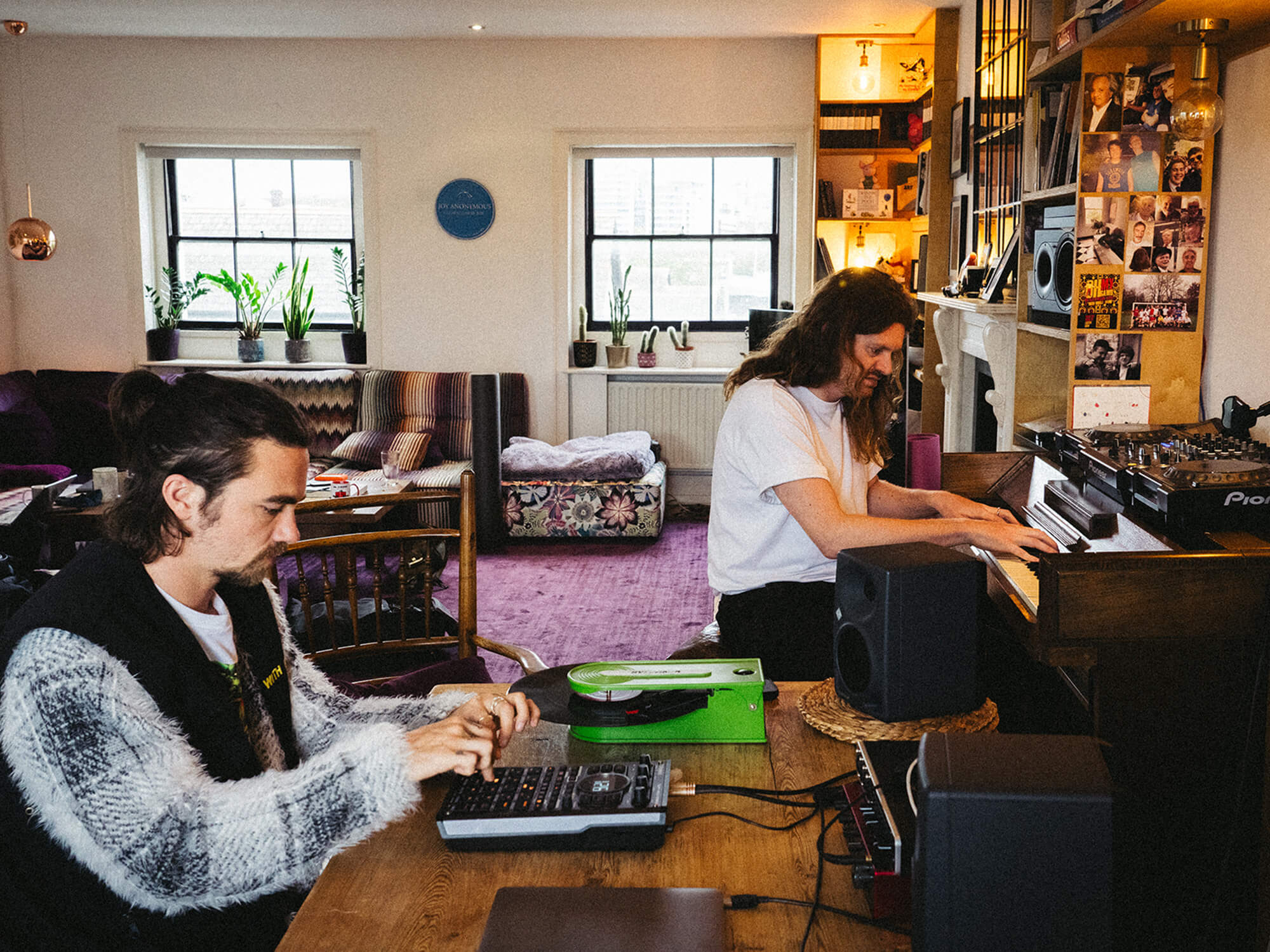
Joy Anonymous in Henry Counsell’s flat. Image: @Sully
Joy Anonymous are more than just one of the most intriguing and refreshing dance music duos kicking about today – they’re essentially a forward-thinking concept. This concept was not born out of a studio nor on a murky dancefloor. It was formed out of inclusive collective energy created by unified souls outside on the wet and windy streets of London – on the Southbank, to be precise.
More specifically, the Joy Anonymous movement was established after production duo Henry Counsell and Lou Curran broke free from their pandemic-induced cabin fever, taking their sampler, keyboard, drum kit, camping chairs and lamps out into the stark reality of ‘the new normal’ on the river Thames every Friday. Here, runners, dog walkers and socially distanced groups of five got their first taste of live music in a long time, instantly finding joy from the heartfelt vibrations of Joy Anonymous. Soon those passers-by turned into regular crowds.
“When we took our equipment down to the streets of London and started,” starts Curran, the percussionist of the two, “the community built around us, fueled us and kept us going. We learned so much from the community. And it’s super important to keep that going for sure. This group of people, we’re all part of it.”
Four years later, on a September South London morning, Joy Anonymous sip tea in Counsell’s cosy flat. It feels like the calm before the storm.
They’ve just finished their second album, Cult Classics, and in the morning are about to step up from Southbank to the global stage, playing Las Vegas and a few shows in New York. That’s not to say this storm’s not been brewing already, however – in March, they released a track co-produced with British producer superstar Fred again.. featuring one of their joint heroes, The Streets. Just days before, they DJed to roughly 10,000 people alongside Fred Again.. and Skrillex in Alexandra Palace.
“It was mad,” Counsell, the Australian-born singer of the two, recalls. “The moment when I was singing, then Mike Skinner came on – at Ally Pally – us in the booth… it couldn’t get more childhood dream than that, to be honest.”
“The way it started was amazing as well,” Curran laughs. “We were playing tunes to an empty Ally Pally, and then all of a sudden the doors opened and it was just people sprinting towards us. In about 10 seconds, it was a full venue. Coming from a DJ background, that was quite literally a dream come true, that night. We’re still recovering.”
While Joy Anonymous’s 2021 album debut Human Again was “introspective” and at times “melancholy”, they say, their new album, Cult Classics is a “celebratory” shout-out to their day-one Southbank squad – hence the ‘Cult’. It’s a refined greatest hits album from projects that started during that special time, when each Friday their community would gather to party in a safe space.
“This feels more celebratory than our first album, Human Again,” says Curran, “which is an introspective documentation of lockdown and what we were doing on the streets of London during that time. You listen back to it now and it does feel melancholy at times.”
“Even in lyrical content,” Counsell adds, “Cult Classics feels more like the soundtrack of Joy meetings: “make some noise for yourself”, “breathe in those around you”, “this is a place you belong”. These lyrics feel more ‘right now’. We’re a unit going out in the world going into different countries, and trying to make music that feels like it’s bringing people together.”
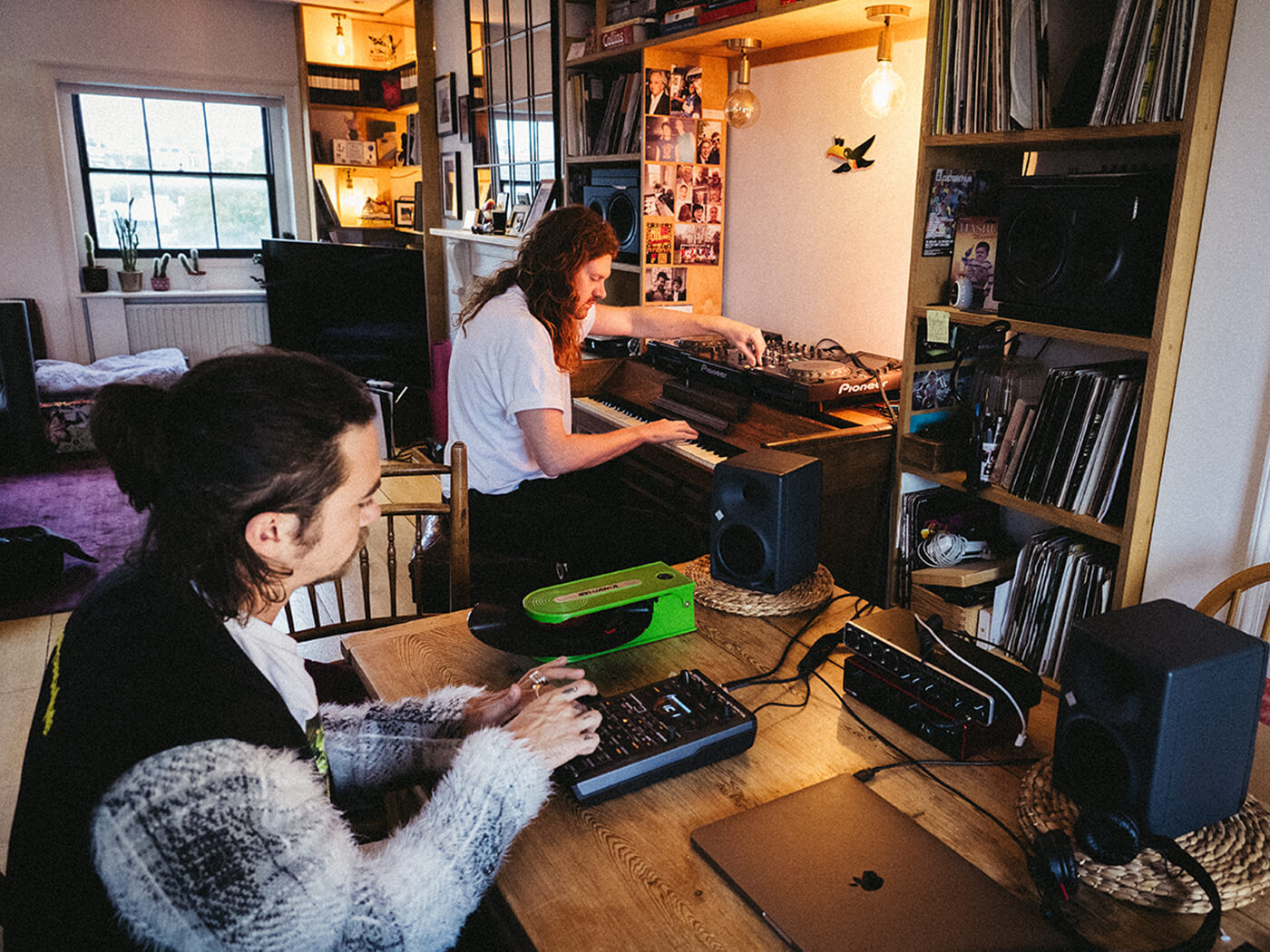
In many ways, Joy Anonymous isn’t just two people. It’s all their fans together as one huge collective. Everyone plays a part, and samples of the crowd singing along, clapping and reacting are even weaved into so many of their tracks to the point where you feel like you’re there in the crowd. Breaking the fourth wall in this way is a refreshing approach to making and outputting music, far removed from conventional ways of releasing music and much more inclusive for the listeners.
“The crowd contributes to the music, 100 per cent,” affirms Counsell. Joy Anonymous’s process now actively involves their audience, and they feed the crowd’s live reactions and even their suggestions into their music.
“Now, we go and play these tracks out in meetings [street-based gigs] and in other countries, and we’re tweaking the sound because of their reaction and how they feel about the records. We make that a real part of our music. It’s not like we go away and chisel away by ourselves and hide it and then release it. It’s like, ‘People are moving. People like it. This is a done record now.’”
The making of Cult Classics
The tracks on Cult Classics, like many of Joy Anonymous’ music, start by sampling the world around them. They tell us how they pride themselves by documenting everywhere they go and injecting that into their productions, “wanting them to be present in the record”.
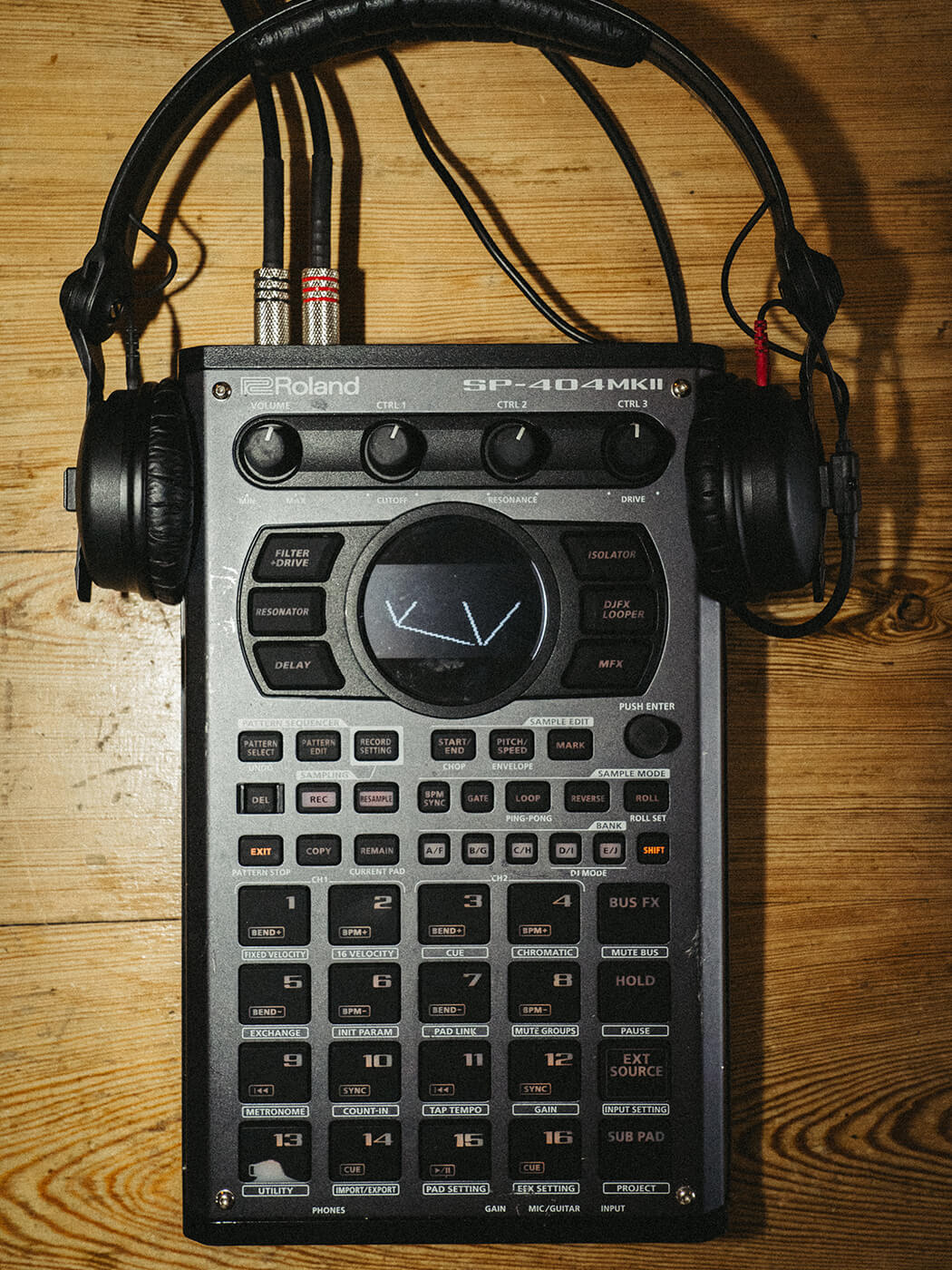
The first track on the album, Beezley’s Poem is an exciting example of this. The recording is a poem told by Beezley, a former security guard, to introduce the band at a club called Elsewhere in New York. We say former because Beezley lost his job after hyping up the crowd during a previous Joy Anonymous show at Terminal V festival in Edinburgh. Since then, he’s become part of their entourage, making regular appearances preaching poetry at their afterparties.
They go on to discuss their music production process, emphasising their use of samples from records but also sampling their own acoustic recordings, later looping them with a Roland SP-404 MKII sampler. Often they’ll use the likes of Soundtoys Decapitator – a “fun to use” saturation plugin – and FabFilter’s Simplon filter to zhuzh things up a bit.
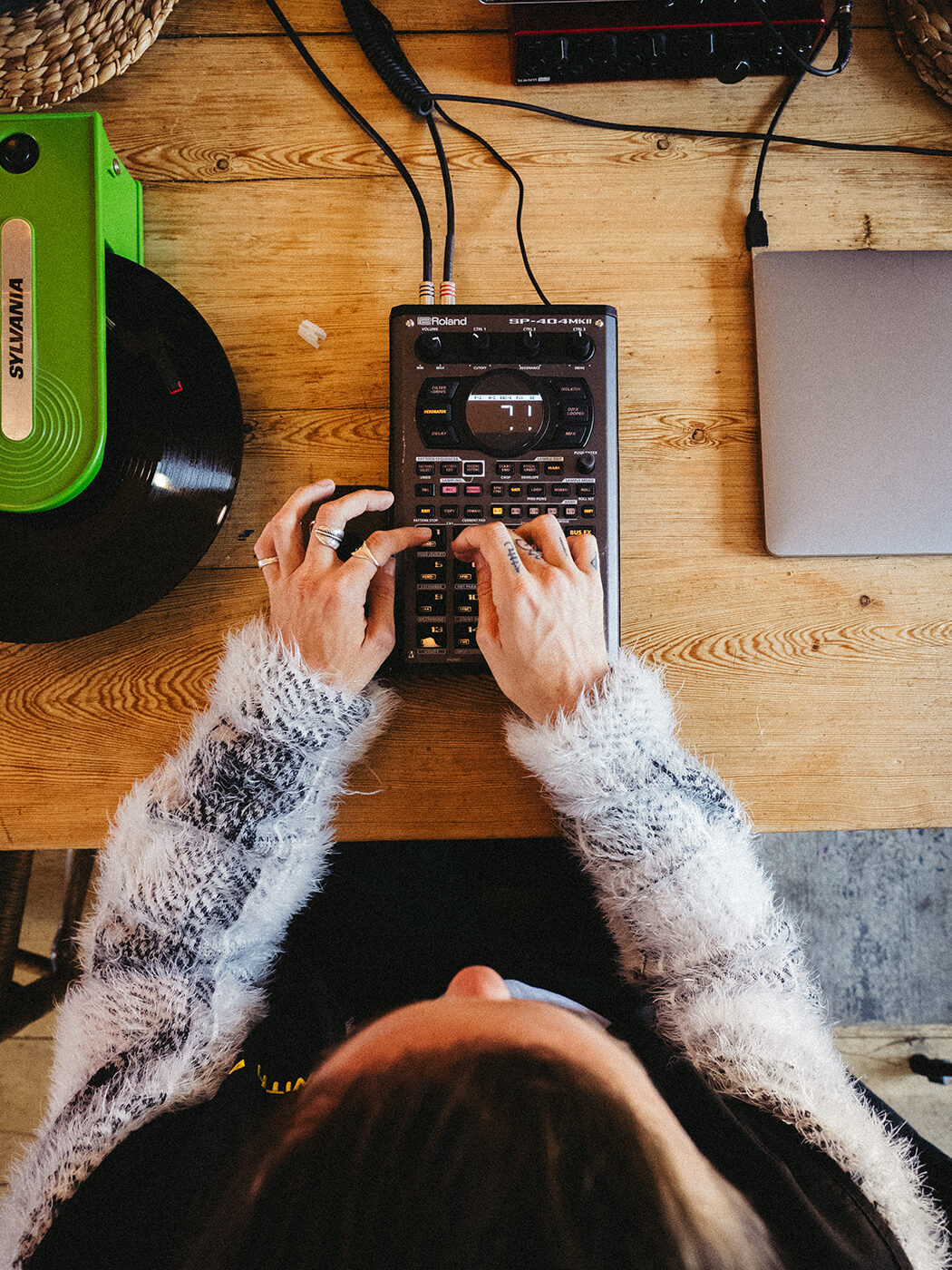
They spent two weeks at musician and singer-songwriter Imogen Heap’s house in February 2022. Here, various instrumentalists popped in and together they’d all jam out “jazzy, guitar-y” music that sounded nothing like dance. Then, they’d re-sample the tracks they had made, re-contextualising them into their own distinct R&B-tinged dance sound with the help of a five-channel loop station. This was, they say, a whole new process.
They used this recording on How We End Up Here, a track that’s a perfect example of them “showing their working” – displaying the raw sample and then flipping it within the track to show transparently how it transforms. They sampled it like they would a “random soul sample”, but with their own “ingredients”. It’s wild. Counsell whips out his MacBook and plays the original recording to us, which sounds, for want of a better example, a Jamie Cullum song. Then he plays what this turned into, and the transformation is awesome.
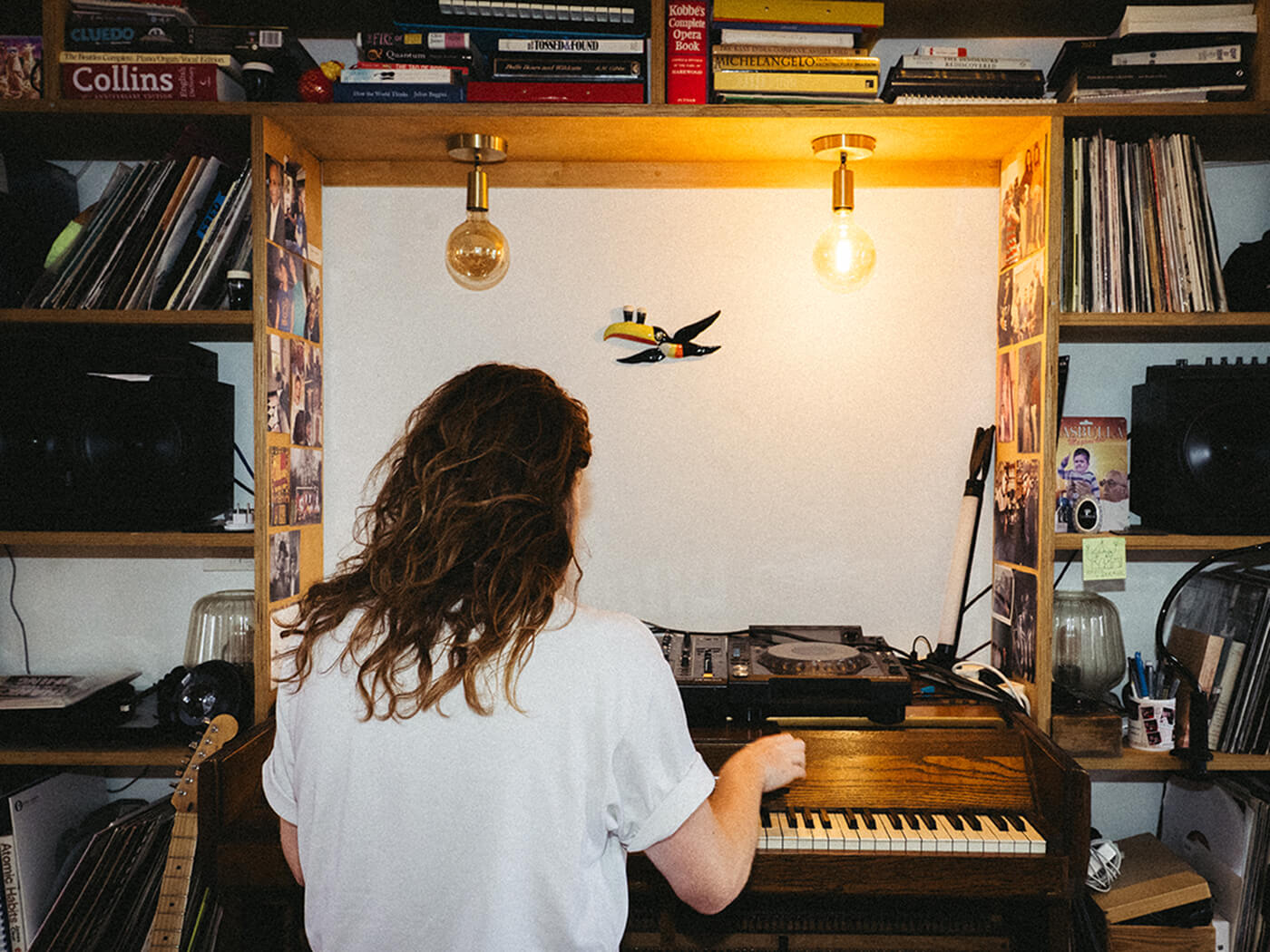
After the foundations were set during those two weeks of sessions at Imogen Heap’s house, the record started to take shape on the road, with their live shows acting as their practice room – “a feedback loop”, as Curran says. This process went on for about a year and at the end, they realised they had an impactful, pretty-much-finished body of work.
“We managed to refine them and finish them by being on the road playing live, especially when we were opening up for Fred [Again..] – a bit less pressure. If you’re the support, you can try loads of these different versions, tweak it that night, and try it again the next night. You can react to how the crowd reacts. That was our feedback loop basically.”
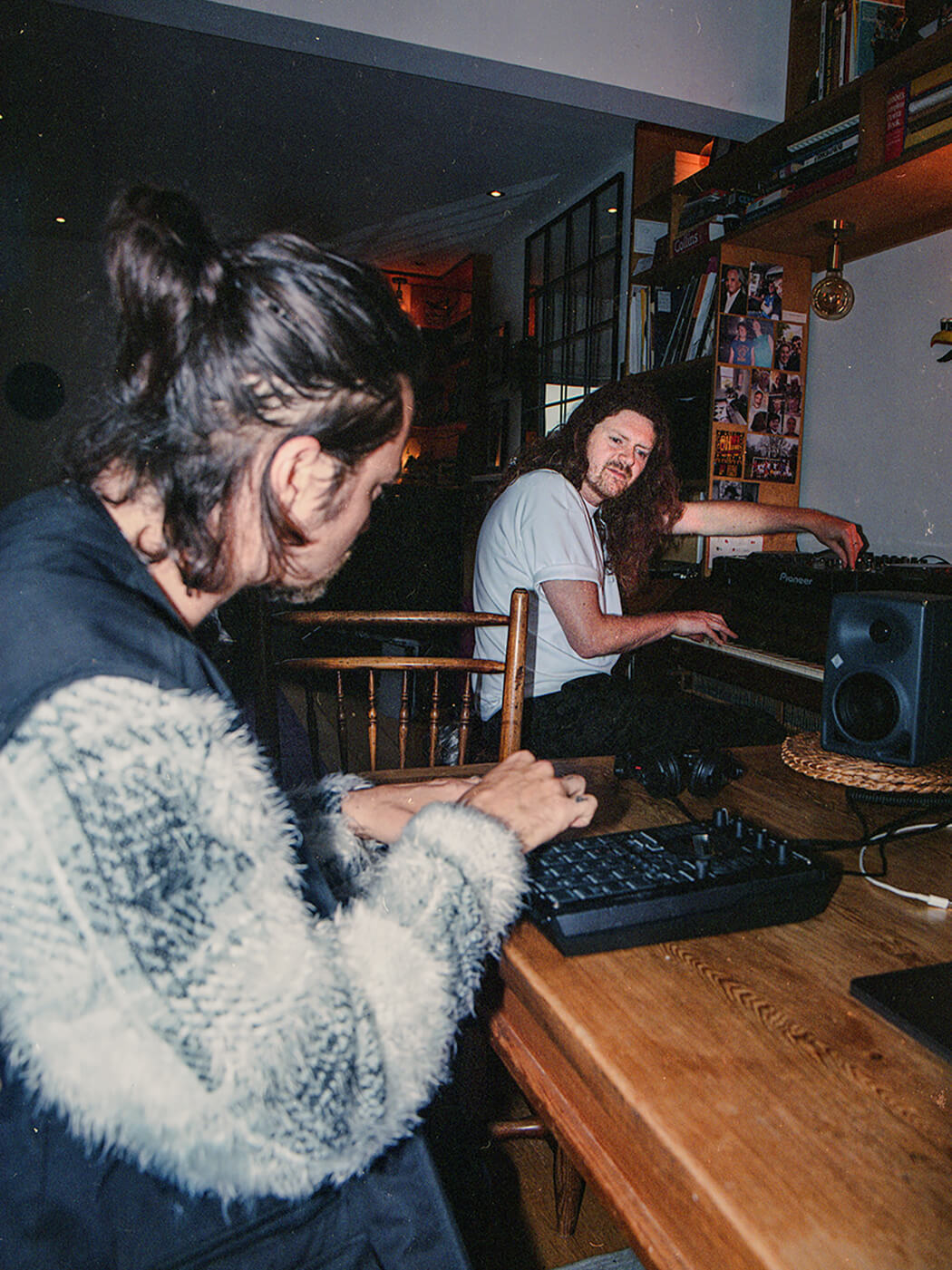
It’s a testament to how skilled Counsell and Curran are that they were able to identify – with a laser-sharp focus – where tracks needed to be amended. And their output is prolific, too; they’re constantly creating. It’s no wonder, then, that Curran’s top piece of advice for producers and musicians is, drumroll, please: “fall in love with the process, not the destination”.
Counsell adds to this: “And don’t get stagnant in that process. Meeting other artists and other musicians who come from different schools of thought and combining them brings endless possibilities. It always keeps it exciting. I know a lot of great producers who just stay in their own room and make amazing sounds but I think working with a bunch of people is always going to bring great results.”
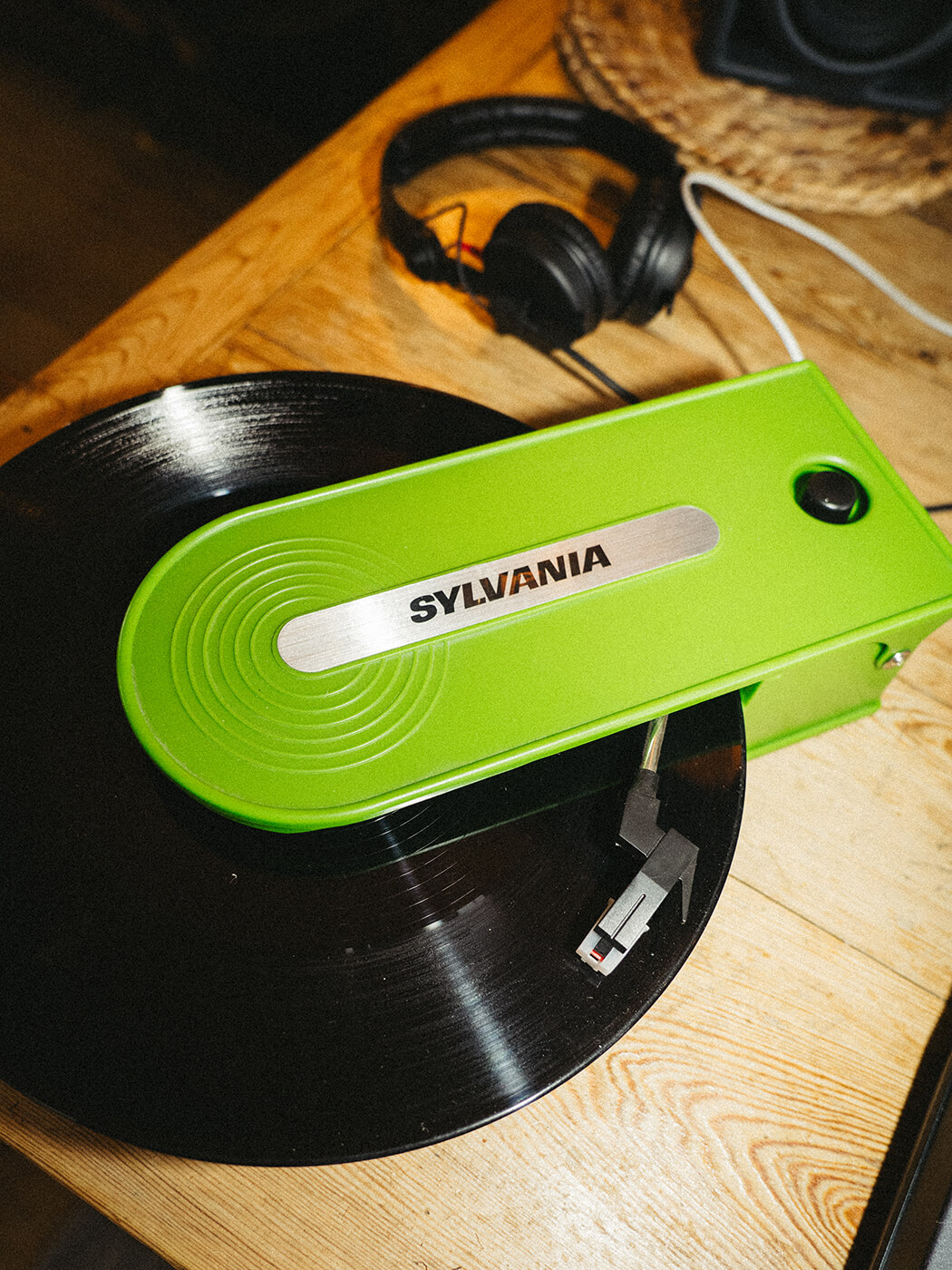
A modular, unconventional and inclusive approach to their musical output, an incessant, admirable work ethic and an overall appreciation of creating joy through collective energy makes Joy Anonymous one of today’s hotly-tipped acts in dance music. Talking of dance, we highly suggest you put on your classics and have a little one to this, a brilliant second album by two radiant beings. Oh, and be sure to keep an eye on the tides of the Southbank.
Joy Anonymous’s second album, Cult Classics, is out now.